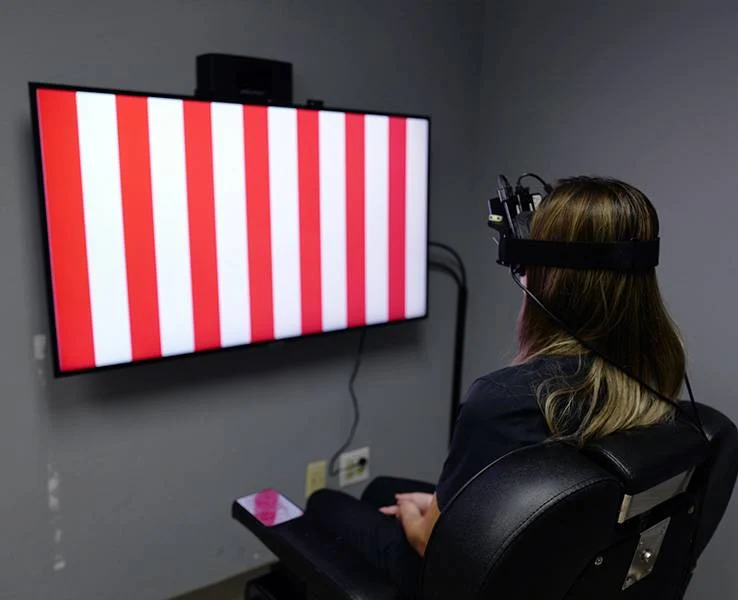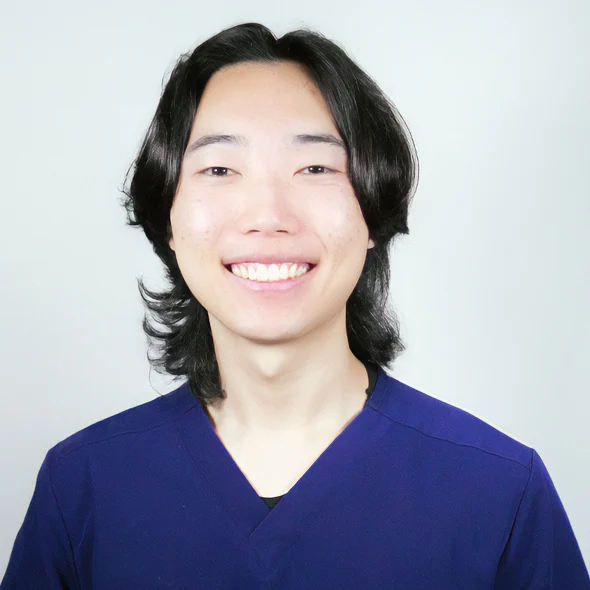Overcoming
dizziness
This specialized therapy utilizes various techniques, including balance, gaze stabilization, and habituation exercises, to improve balance, reduce dizziness, and enhance overall stability.
Finding your balance
treatment for dizziness
Dizziness encompasses a variety of sensations, including feelings of spinning, unsteadiness, and lightheadedness. It is one of the most frequently reported complaints in medical settings, ranking as the second most common issue presented to doctors today.
Common Dizziness and Balance Disorders that we treat
- Characterized by brief episodes of spinning sensation triggered by head movements
- Caused by displaced calcium crystals in the inner ear
- Treatable with specific repositioning maneuvers
- Dizziness associated with neck pain and cervical spine dysfunction
- Results from a sensory mismatch between neck proprioception and vestibular input
- Treated with manual therapy and vestibular rehabilitation
- Can lead to various balance disorders, including post-concussion syndrome
- May trigger conditions like PPPD or exacerbate existing vestibular issues
- Requires a multidisciplinary approach for diagnosis and treatment
- Episodic vertigo associated with migraine symptoms
- Often misdiagnosed due to variable presentation
- Managed with migraine prevention strategies and vestibular therapy
- Acute onset of vertigo due to inner ear inflammation
- Can lead to prolonged imbalance and dizziness
- Treatment includes vestibular suppressants and rehabilitation
- Characterized by episodes of vertigo, fluctuating hearing loss, tinnitus, and aural fullness
- Managed through dietary changes, medications, and in severe cases, surgical interventions
- Persistent sensation of rocking or swaying after sea travel
- Can become chronic and significantly impact quality of life
- Treatment challenges due to limited understanding of underlying mechanisms
- Chronic dizziness exacerbated by upright posture, movement, and complex visual environments
- Often triggered by vestibular disorders, anxiety, or concussions
- Treated with a combination of vestibular rehabilitation, medication, and cognitive behavioral therapy
- Multifactorial, involving deterioration of multiple sensory systems
- Increased risk of falls and associated complications
- Management focuses on fall prevention and addressing underlying causes
- Can affect balance and proprioception, leading to unsteadiness
- Often associated with conditions like diabetes or vitamin B12 deficiency
- Treatment targets underlying cause and may include physical therapy for balance training
Vestibular rehabilitation
care tailored to you
At Norcal Brain Center, we transform dizziness treatment by moving away from the outdated one-size-fits-all approach. Our method is based on the recognition that dizziness is a complex, personal experience that requires customized solutions.
Why standard Protocals fail
Generic treatment plans for dizziness frequently overlook the unique underlying causes that contribute to this condition. Traditional, cookie-cutter approaches to treatment can have several downsides, such as:
- Everyone gets the same set of exercises and does not take into account individual pathology
- Frustrated patients due to limited improvement and residual symptoms.
- Treatments can exacerbate symptoms by failing to address underlying causes.
Our precision-driven Approach
- Comprehensive Initial Evaluation
- Detailed diagnostic testing
- Identifying specific vestibular dysfunction as well as visual/proprioceptive
- Customized Rehabilitation Strategies
- Tailored vestibular exercises
- Advanced vestibular treatment options
- Holistic approach on other neurological symptoms and the effects on the Vestibular system
- Comprehensive Initial Evaluation
Best Decision I’ve every Made

Unveiling the root of your dizziness
Norcal Brain Center employs a state-of-the-art diagnostic protocol that goes beyond standard evaluations. Our comprehensive physical and neurological examination is designed to pinpoint the exact cause of your dizziness or unsteadiness with unparalleled precision.
- High-precision computerized eye movement recording
- Detects subtle vestibular abnormalities often linked to certain types of headaches
- Provides quantitative data on eye movements and potential neurological issues
- Assesses the function of all six semicircular canals
- Measures the vestibulo-ocular reflex (VOR) with millisecond accuracy
- Identifies specific deficits in the vestibular system
- Analyzes balance and postural control with precision
- Identifies subtle deficits in proprioception and motor control
- Analyze your balance control under various sensory conditions
- Quantifies the relative contributions of visual, vestibular, and proprioceptive systems
- Helps differentiate between various causes of imbalance
- Conducted by our team of expert neuro-rehab
specialists - Assesses cranial nerve function, coordination, and sensory processing
- Evaluate for any underlying neurological conditions
Our cutting-edge program integrates a diverse array of therapies, each precisely calibrated to address your specific areas of deficit:
- Custom-designed exercises to retrain the balance system
- Gaze stabilization techniques to improve visual clarity during head movements
- Epley, Semont, and other maneuvers for BPPV treatment
- Customized repositioning techniques based on specific canal involvement
Focuses on improving brain-eye coordination to optimize visual processing and integration.
It addresses headaches, dizziness, double vision, eye strain, balance problems, and reading difficulties.
Targets root causes such as concussions, traumatic brain injuries (TBI), stroke, ADHD, or developmental disorders.
Uses customized exercises (e.g., eye tracking, focusing drills) to retrain neural pathways.
It may incorporate tools like prism lenses, light therapy, or sensory integration techniques.
It helps patients with post-concussion syndrome regain visual stability and reduce symptoms.
Supports children/adults with ADHD or learning disabilities by enhancing visual focus and comprehension.
Often paired with occupational or physical therapy for holistic rehabilitation.
It aims to reduce reliance on compensatory strategies and restore natural visual function.
Focus on improving body awareness by enhancing the brain’s ability to sense joint position, movement, and balance.
Target proprioception deficits caused by injuries, neurological disorders (e.g., stroke, Parkinson’s), or aging.
Use exercises like balance training (e.g., wobble boards), resistance bands, or weighted vests to stimulate sensory feedback.
Help restore coordination, stability, and posture after injuries (e.g., ankle sprains, spinal issues) or surgeries.
Often integrated into physical therapy or rehabilitation programs for athletes or neurological recovery.
Include techniques like joint repositioning drills, uneven-surface walking, or controlled weight-shifting activities.
Benefit conditions like arthritis, chronic pain, or developmental delays (e.g., in children with sensory processing disorders).
Can reduce fall risk in older adults by strengthening dynamic balance and reaction time.
May incorporate tools like vibration plates, foam rollers, or proprioceptive taping (e.g., kinesiology tape).
Support recovery in neurological rehab (e.g., post-stroke) by rewiring brain-body communication.
Enhance athletic performance by refining movement precision and injury resilience.
- Progressive challenges to improve static and dynamic balance
- Gait analysis and correction techniques
- Personalized dietary plans to support vestibular health
- Stress reduction techniques and sleep hygiene optimization
Immersive Therapy: Uses virtual reality (VR) to create engaging, interactive environments for physical, cognitive, or neurological rehabilitation.
Target Conditions: Addresses stroke recovery, traumatic brain injury (TBI), Parkinson’s disease, multiple sclerosis (MS), spinal injuries, balance disorders, and chronic pain.
Motor Skill Development: Combines motion tracking and gamified exercises to improve coordination, strength, and range of motion.
Real-Time Feedback: Provides instant performance metrics to patients and therapists, enabling adjustments to treatment plans.
Personalized Programs: Tailors difficulty levels and scenarios based on patient progress and specific rehabilitation goals.
Pain Management: Distracts patients from discomfort during therapy by immersing them in calming or stimulating virtual worlds.
Cognitive Training: Enhances memory, attention, and problem-solving through interactive tasks (e.g., virtual puzzles or memory games).
Balance & Gait Training: Simulates real-world challenges (e.g., walking on uneven surfaces) to improve stability and reduce fall risk.
Remote Accessibility: Supports telehealth with cloud-based monitoring, allowing therapists to track progress remotely.
Neuroplasticity Boost: Encourages brain rewiring by repeating adaptive movements in a controlled, motivating environment.
Cost-Effective: Reduces long-term healthcare costs by accelerating recovery and minimizing in-person clinic visits.
Research-Backed: Supported by clinical studies showing improved outcomes in mobility, pain reduction, and patient engagement.
- Activities to improve spatial awareness and motor planning
- Integration of visual and proprioceptive inputs
Personalized Therapies
At Norcal Brain Center, our neuro-rehab specialists provide expert treatment for a wide range of conditions, including
Find Out if Norcal Brain Center is Perfect for You.
Book your complimentary 20 minute consultation with one of our patient case managers.





